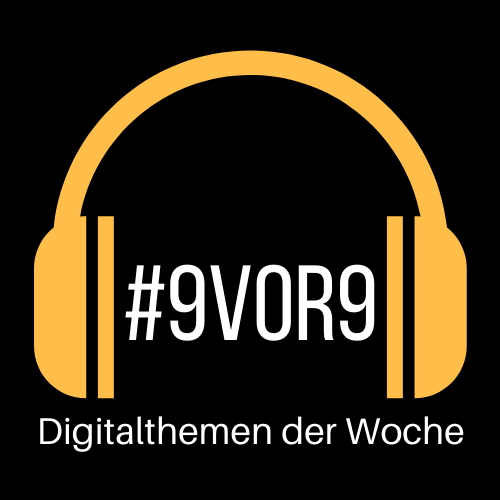You’ve all heard the HCL Domino Volt tagline, “Build enterprise apps lightning fast.” But what do we really mean when we say “fast”? We recently hosted a webinar to show you what you can build in 30 days or less. You can catch the replay here or read the recap below. You’ll also find responses to our live Q&A during the webinar below.
If you don’t already know, HCL Domino Volt is a low-code capability for business users and citizen developers to easily build powerful, secure, and enterprise-grade workflow-based applications. From business-process apps to customer-facing mobile apps, you can create solutions for any industry, across different use cases.
![]()
What Can You Do in 30 Days?
So, let’s imagine that you have a solution or app in mind but have little to no knowledge of HCL Domino Volt. How do you go about using it to build an app? Assuming you have a day job and can only squeeze in 1-2 hours a day, this is what a timeline could look like for you:
![]()
- Day 1-3 (3 days): Learn how to use HCL Domino Volt. Sign up for a free sandbox account and get access to a list of training resources.
- Day 4–9 (5 days): Pick a use case and define the requirements. What are you trying to solve and build? Does your app need workflows and approval processes? How will those be mapped out? Your requirements might also require refinements and iterations along the way.
- Day 10-17 (7 days): Build the app! Refer to our documentation and wiki pages along the way use our forum to participate in our community and ask questions.
- Day 18-25 (7 days): Share, test, and refine the app. Building your app is an iterative process. This is where you’ll build the app, share and gather feedback, and work towards a finalized version.
- Day 26-29 (3 days): Style the app. You can either use the current themes provided or add custom themes that align with your organization’s branding. Or use CSS or HTML to fully customize the look of your app.
- Day 30: Your app is ready to be deployed and used!
30–Day App Samples
Here at HCL, we believe in drinking our own champagne and we’ve gathered some examples of how HCL team members — all non-developers — have been using HCL Domino Volt to build apps of their own.
Volunteer App
This app helps organizations recruit volunteers and recommends users with volunteering opportunities based on their preference — time, money, or donation.
- Innovation: Use of CSS styling and integrations with QR code generator for online payment
- Skill level: Non-developer, intermediate proficiency in HTML
- Timeline: 3 weeks
![]()
Sales Support App
This app helps sales teams manage customer requests by collecting, approving, assigning, and updating customer records.
- Innovation: For our HCL Notes and HCL Domino developers, Petr explores the differences between the two (view – form binding) while building this app. Be sure to catch the webinar replay to get the full walk-through.
- Skill level: Non-developer with some experience building simple forms on HCL Leap.
- Timeline: 4 weeks
![]()
Expense Approval, Asset Tracking, and Vacation Requests
Our services team recently hired a team of university recruits in Vijayawada with the goal of building a scalable app modernization team. To do so, they’ve embraced low-code culture and tasked the team with building sample apps that cover common use cases needed by internal teams, partners and customers. They have since completed three apps that handle expense approval, asset tracking, and vacation requests.
- Skill level: Non-developer with intermediate proficiency in HTML.
- Timeline: 3 weeks per app.
![]()
We wanted to highlight how they approached building the app. Though like the timeline above, some differences include specifically defining UI/UX standards and following a sprint plan.
![]()
All apps featured in the webinar are now available as sample apps and can be found here. If you are not an HCL Domino Volt customer, you can play around with these sample apps in a free sandbox environment.
Webinar Q&A
Q: How do you put an application into production?
A: Deploying an app is as simple of clicking deploy. This generates the runtime app and database (nsf file).
Q: Do you have a production-ready HCL Domino Volt environment?
A: For guidance on setting up your environment, please view this webinar.
Q: Can we use Java-based REST API in the services?
A: Yes. You can integrate with any REST based services.
Q: Which license do I need to purchase HCL Domino Volt?
A: Please check out this blog for more information.
Q: Are there plans to provide a graphical tool to design a workflow?
A: Yes. We plan to enhance HCL Domino Volt’s workflow with a more visual approach to design.
Q: Is it possible to allow anonymous user access to an HCL Domino Volt app for submitting forms which are then sent through a workflow process that would require authentication?
A: Yes. You can specify anonymous access for an app. A typical use case is an anonymous access form that is filled out on a public-facing website which then starts a workflow in which authenticated users inside the organization are then involved.
Q: Will it be possible to access HCL Domino app data from other domino-servers?
A: This is possible today using HCL Domino Access Services (REST). In the future, we will consider adding remote server support to HCL Domino Volt’s out-of-the-box Domino services.
Q: Currently, the members field in unavailable when you look up a group. Are there any plans to make that available in a service?
A: This is a great idea that we will consider adding to the product!
Q: Does the sandbox include the new December release?
A: Yes! You can sign up here.
Q: Does HCL Domino Volt work behind a custom HCL Domino authentication built with an DSAPI-Filter?
A: This should work but is something we have not yet tested or issued a support statement on.
Q: Can we trigger document creation to another NSF from HCL Domino Volt?
A: That’s a great idea! Please add your feedback to our Ideas Portal here.
Q: Are we able to build multilingual apps?
A: Yes. This can be done by either by adding language translation services to your app, or by adding and managing different language text strings. In both cases you could have the browser detect the user’s locale and provide the appropriate language strings.
Q: Are HCL Domino Volt apps cluster-aware for high availability?
A: HA and cluster support should work. This is something we plan to test and provide support guidance on with the next release.
Q: Are we able to re-use information collected through HCL Domino Volt in other systems?
A: Yes. There are many ways you can do so. You can export the data in Excel or XML format. Data collected is also available via a REST API. And lastly, services can be used to push the data to other system or PDF documents.
Q: I might use HCL Domino Volt to collect information which has to be stored in an ECM system. How would I “link” these two worlds?
A: You can tell Domino Volt to store the information in ECM using REST or make ECM “read” the data in Domino Volt using REST as well.
Q: Is there full text search?
A: Yes. The December release includes an option for full text index your app. Doing this then allows you to use the “contains” search operator against documents in the app.
Q: Any plans in the roadmap to use agents to do tasks such as send periodic reminders to a set of users?
A: Yes! We plan to make it easier to leverage agents to do background processing. Sending reminders is something we have on our list of workflow related features to address.














